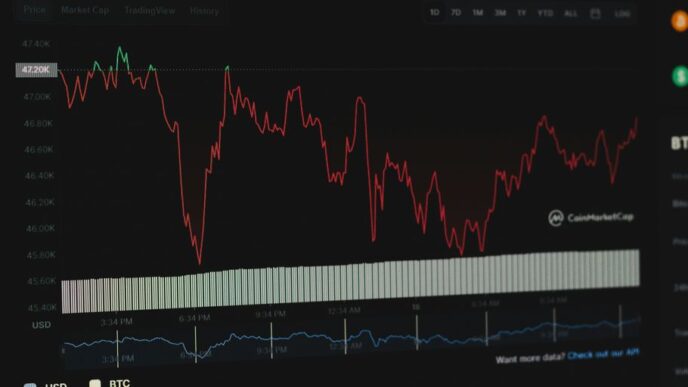Cultural entrepreneurs are reshaping our world in fascinating ways. They blend creativity with business savvy to drive social change, preserve cultural heritage, and spark innovation. As we explore the influence of these individuals on modern society, we see how they create vibrant communities, boost local economies, and tackle pressing challenges. Their work is not just about profit; it’s about making a difference and connecting people through culture.
Key Takeaways
- Cultural entrepreneurs drive community engagement and cultural preservation, helping to revitalize local identities.
- They contribute significantly to the economy by creating jobs and supporting sustainable business practices.
- Despite facing challenges like funding access and market competition, cultural entrepreneurs continue to innovate and inspire change.
Cultural Entrepreneurs As Catalysts For Change
Cultural entrepreneurs? They’re not just business people; they’re like, social alchemists. They take culture – art, heritage, traditions – and turn it into something that shakes things up. It’s pretty cool, actually. They see gaps, needs, and opportunities to make a real difference in their communities and beyond. It’s not just about making money (though that’s part of it, of course), it’s about sparking change and making the world a little bit better, one creative venture at a time.
Redefining Community Engagement
Cultural entrepreneurs are changing how we connect with each other. Forget the same old town hall meetings; they’re creating experiences that draw people in. Think about it:
- Interactive art installations that get people talking and thinking. It’s like, suddenly, art isn’t just something you look at; it’s something you do.
- Community gardens that bring neighbors together to grow food and build relationships. It’s not just about the veggies; it’s about the connection.
- Local festivals that celebrate the unique character of a place. It’s a chance to show off what makes your town special and build some local pride. These cultural activities are important.
They’re making community engagement fun, accessible, and meaningful. It’s about creating spaces where people feel like they belong and can contribute.
Promoting Cultural Heritage
In a world that’s constantly changing, cultural heritage can get lost in the shuffle. Cultural entrepreneurs are stepping up to make sure that doesn’t happen. They’re finding innovative ways to keep traditions alive and relevant. For example:
- Reviving traditional crafts by giving artisans a platform to sell their work. It’s about supporting local talent and preserving skills that might otherwise disappear.
- Creating museums and cultural centers that tell the stories of a community. It’s a way to educate people about their history and celebrate their identity.
- Using technology to share cultural heritage with a wider audience. Think virtual tours of historical sites or online archives of traditional music. It’s about making culture accessible to everyone, no matter where they are.
Fostering Social Innovation
Cultural entrepreneurs aren’t afraid to tackle tough social problems. They see culture as a tool for creating positive change. They’re using their creativity and business skills to address issues like:
- Promoting diversity and inclusion through art and storytelling. It’s about creating spaces where everyone feels seen and heard.
- Supporting marginalized communities by providing them with economic opportunities. It’s about empowering people to build better lives for themselves.
- Raising awareness about important social issues through creative campaigns. It’s about using art to spark conversations and inspire action. These social reforms are important.
They’re not just talking about change; they’re making it happen. They’re proving that culture can be a powerful force for good in the world.
Economic Contributions Of Cultural Entrepreneurs

Job Creation Through Cultural Ventures
Cultural entrepreneurs? They’re not just about art; they’re also about jobs. Think about it: a local pottery studio creates jobs for instructors, technicians, and sales staff. A community theater hires actors, stagehands, and box office personnel. These ventures, big or small, add up. It’s not just about the jobs themselves, but also the skills people learn and the experience they gain, which can lead to even more opportunities down the road.
- Craft fairs and artisan markets provide platforms for individual creators to sell their work, supporting their livelihoods and fostering economic independence.
- Cultural tourism initiatives, such as guided tours of historical sites or culinary experiences, generate employment in the hospitality and tourism sectors.
- Digital platforms and online marketplaces enable cultural entrepreneurs to reach wider audiences and create new revenue streams, leading to job creation in areas like web development, marketing, and customer service.
Boosting Local Economies
When cultural entrepreneurs thrive, so do local economies. They attract tourists, fill restaurants, and bring life to neighborhoods. A vibrant arts scene can make a town more attractive to new residents and businesses. Plus, cultural events and festivals can generate significant revenue for local businesses, from hotels to food vendors. It’s a ripple effect that benefits everyone.
- Increased tourism revenue: Cultural attractions and events draw visitors who spend money on accommodation, food, transportation, and souvenirs.
- Revitalization of urban areas: Cultural projects can transform neglected neighborhoods into vibrant hubs of activity, attracting investment and driving economic growth.
- Support for local businesses: Cultural entrepreneurs often collaborate with local suppliers and service providers, creating a network of economic interdependence.
Sustainable Business Models
One of the cool things about cultural entrepreneurship is the focus on sustainability. It’s not just about making a quick buck; it’s about building something that lasts. Many cultural entrepreneurs prioritize ethical sourcing, fair labor practices, and environmental responsibility. This approach not only benefits the community but also attracts customers who are looking for businesses with values. It’s a win-win.
- Emphasis on local resources and traditions: Cultural entrepreneurs often utilize local materials, skills, and knowledge, reducing their environmental impact and supporting local communities.
- Community-based ownership and governance: Many cultural ventures are structured as cooperatives or social enterprises, ensuring that profits are reinvested in the community and that decision-making is participatory.
- Long-term vision and commitment: Cultural entrepreneurs are often driven by a passion for their craft and a desire to preserve cultural heritage, leading to a long-term commitment to their businesses and communities.
Challenges Faced By Cultural Entrepreneurs
Cultural entrepreneurs are out there trying to make a difference, blending creativity with business. But it’s not always a smooth ride. They face a unique set of hurdles that can make their journey pretty tough. It’s important to acknowledge these challenges to better support them.
Access To Funding
One of the biggest problems is getting money. Traditional investors often don’t get cultural ventures. It’s hard to convince them that an art project or a heritage initiative can be profitable. This leads to:
- Limited Funding Options: Cultural entrepreneurs often have to rely on grants, which are competitive and not always sustainable.
- Difficulty Securing Loans: Banks are often hesitant to lend to cultural ventures because they’re seen as high-risk.
- Bootstrapping: Many end up using their own savings or borrowing from friends and family, which puts a lot of personal strain on them. It’s tough to grow when you’re always worried about money. Securing venture capital can be a game changer.
Navigating Market Dynamics
Understanding the market is another big challenge. Cultural products and services aren’t always easy to sell. It’s not like selling a widget; you’re selling an experience, an idea, a piece of culture. This means:
- Identifying Target Audiences: Figuring out who will actually pay for what you’re offering can be tricky. It requires a lot of research and experimentation.
- Pricing Strategies: Setting the right price is tough. You want to make a profit, but you also want to make your product accessible. It’s a delicate balance.
- Marketing and Promotion: Getting the word out can be expensive and time-consuming. Cultural entrepreneurs often lack the resources to compete with bigger businesses. They need to be creative with their marketing strategies.
Balancing Profit And Purpose
Perhaps the most unique challenge is balancing the desire to make money with the desire to make a difference. Cultural entrepreneurs are often driven by a passion for their culture or their community. They don’t want to compromise their values for the sake of profit. This means:
- Maintaining Artistic Integrity: It’s easy to get pressured to change your product to appeal to a wider audience, but that can mean losing what made it special in the first place.
- Social Impact Measurement: Proving that your venture is actually making a difference can be difficult. It requires careful planning and data collection.
- Avoiding Exploitation: It’s important to make sure that you’re not exploiting the culture or the community you’re trying to serve. This requires a lot of sensitivity and ethical considerations. It’s a constant tightrope walk between financial sustainability and social responsibility.
The Future Of Cultural Entrepreneurship
Cultural entrepreneurship is really interesting because it’s not just about making money; it’s about shaping the world around us. What’s coming next? Well, it looks like a mix of new tech, fresh ideas from young people, and more teamwork across the globe. It’s a pretty exciting time to be involved.
Emerging Trends And Technologies
Technology is changing everything, and cultural entrepreneurship is no exception. Here’s what I’m seeing:
- AI and AR: Imagine walking through a museum where the art comes to life, or using AI to create personalized cultural experiences. It’s already happening, and it’s only going to get bigger. global SD-WAN provider can help with the infrastructure.
- Blockchain for Artists: Artists are starting to use blockchain to protect their work and get paid fairly. It cuts out the middleman and gives them more control. It’s a game-changer for sustainable business models.
- Virtual Reality Storytelling: VR is letting us experience stories in a whole new way. Think about stepping into a historical event or exploring a different culture without leaving your home. It’s immersive and powerful.
Youth Involvement And Innovation
Young people are bringing so much energy and creativity to this field. They’re not afraid to try new things and challenge the old ways of doing things. Here’s what they’re up to:
- Social Media Activism: They’re using platforms like TikTok and Instagram to raise awareness about cultural issues and promote their projects. It’s a really effective way to reach a wide audience.
- Community-Based Projects: Many young entrepreneurs are focusing on projects that directly benefit their communities, like creating art programs for kids or preserving local traditions. It’s all about giving back.
- Tech-Savvy Solutions: They’re using their tech skills to create innovative solutions to cultural challenges, like developing apps that teach endangered languages or platforms that connect artists with patrons.
Global Impact And Collaboration
Cultural entrepreneurship isn’t limited by borders. People are working together across the globe to share ideas and create projects that have a global impact. Here’s how:
- Cross-Cultural Exchange Programs: These programs allow artists and entrepreneurs from different countries to come together, share their experiences, and collaborate on new projects. It’s all about learning from each other.
- Online Platforms for Collaboration: The internet is making it easier than ever for people from different cultures to connect and work together. There are platforms specifically designed for job creation through cultural ventures.
- Global Festivals and Events: These events bring together artists, entrepreneurs, and audiences from all over the world to celebrate culture and innovation. It’s a great way to network and get inspired.
Cultural entrepreneurship is changing fast, and it’s exciting to think about what’s next! As new ideas and creative projects pop up, they can really shape our communities and the world. If you want to learn more about how you can get involved in this movement, visit our website for tips and inspiration. Let’s build a brighter future together!
Wrapping It Up
In the end, cultural entrepreneurs are really shaking things up in our society. They’re not just about making money; they’re about breathing new life into traditions and connecting people through art and culture. This new wave of entrepreneurship is all about using creativity to tackle social issues and preserve our cultural heritage. It’s clear that these folks are making a difference, whether it’s by creating jobs or inspiring others to appreciate the arts. As we look ahead, it’s exciting to think about how these cultural innovators will continue to shape our world, making it richer and more vibrant for everyone.














